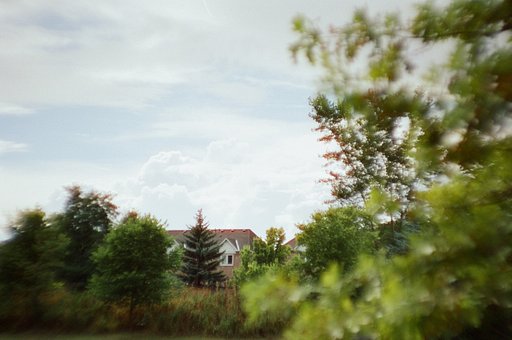How to Fix and Refurbish an Olympus Trip 35
13 23 Share TweetI recently bought a non-working camera that was older than me. Looking around the internet, I found some help on fixing a common issue (stuck aperture blades) and how to apply some nice new skins for a modern look. I set my heart on bringing my Trip back to life and hopefully, this guide will inspire and help others to do the same.

Having picked up a faulty Olympus Trip 35 for £5, it was time to attempt a fix and refurbish to restore the camera to working condition. Top priority has to be working mechanicals but I also prepared to clean and re-skin the camera too. If you wish to undertake the task yourself I would advise the following materials and tools:
- Small screwdrivers
- Stanley/craft knife
- Lighter fluid
- J-cloths
- Microfiber cloth
- Cotton ear buds
- Brasso or metal polish
- Washing-up liquid
- Pencil
- Cocktail or lollipop sticks
- Ice-cube tray to hold screws safely
- New skin (http://aki-asahi.com/store/)
- New light seals (http://aki-asahi.com/store/)
Now, on to the tutorial.
Step 1. Firstly, you need to check the meter is working correctly. To be absolutely certain it is, you’ll need to remove the top plate of the camera and check the needle movement. Start by removing the screw in the lefthand side under the wrist strap lug. Two more screws can be found under the rewind crank. To get to these, simply open the back, wedge something like a lollipop stick in to keep it from spinning, and unscrew the crank from the top.

Step 2. With the top off, you should now have access to the meter, or more importantly the meter needle. With no light entering the camera (cover the front of the lens with your hand), the needle will be pushed up against the viewfinder. Now point the lens to some bright light and the needle should swing to the middle. This confirms the meter is working. In that case (as with this particular camera), the fault lies with the aperture blades.
Step 3. The top can now be reassembled but be sure to clean any muck from hard-to-reach areas as you do to make cleaning the camera later a little easier. To get to the aperture blades, start by removing the bottom plate of the camera by unscrewing the two small screws. Now turn your attention to the front inner ring (with the writing on) and locate the three small screws around the rim before you remove them to set the aperture to ‘A’ and the focal length to infinity (the mountain symbol). Now loosen the three screws but do not remove them completely. The ring can now be pulled off.
Step 4. To remove the front lens element, simply unscrew it. It’s important to mark it before you move it so it can be returned into the exact same position. If not, the camera’s focus will be off. I suggest a marker or a scratch from a knife on the rim at the 12 o’clock position. Remove the lens, give it a good clean with a microfiber cloth and set it aside.

Step 5. Now you need to remove the bulk of the lens from the body. To begin, lift the wires on the bottom of the camera over the tripod thread to loosen them. Now locate the three deeper screws inside the lens and remove all three. The lens will now pull off the body exposing the middle element. Remove this and clean it also.
Now we get to the important aperture blades. Remove the screws holding it in place and start to work it with your fingers. It should open and close easily enough. Now take the lighter fluid and thoroughly clean the blades and surrounding metal. Keep working them and you should notice that they now move more freely. Leave the blades to fully dry or use a hairdryer. It’s important not to lubricate the blades as they will eventually stick again. To aid lubrication you can rub some graphite onto the blades by simply using a craft knife or Stanley blade to shave the end of a soft pencil (I used a 3B). Blow away any excess.
Step 6. With the blades now moving with ease, clean the rear lens element and trace back through your steps to reassemble the lens. Remember to align the front element as you marked it at the start. Once the lens has been assembled move the focal length dial one way then the other to make sure that the front element is rotating at the same time.
If everything looks good, it’s time for a test. The easiest test is to leave the aperture on ‘A’, cover the lens, and try to depress the shutter. If everything is now working, the shutter will not fire and a red flag will be shown in the viewfinder. Removing your hand from the lens and trying again should allow the shutter to fire.
You can also see the apertures in action by selecting them manually and either pressing the shutter half way. At f/2.8, the hole will be nice and wide whereas f/22 will have a very narrow hole. These tests confirmed that the repair in this particular camera was successful!
With the mechanics now working, you can turn your attention to the looks. Start by pulling off the camera’s current skin which should peel off quite nicely. Now locate the old messy light seals by the hinge of the door and clean these up. With the old seals removed stick the new ones in place using a cocktail stick to get to the hard-to-reach areas.
Step 9. At this point, you can give the camera an all over clean with some mild washing-up liquid and water mix with a slightly damp cloth and allow it to dry. Now polish the camera with something like Brasso liquid, taking care to avoid the parts the new skin is going to be stuck to. Depending on the condition of the camera you could use ultra-fine grit sandpaper or polish to really go to work on the camera. This is something I may look to in the future for the silver colored parts.
The new skins are relatively easy to attach. They don’t fix permanently so you can correct any errors. Be sure to get the skin right under the lens for a good fit. Now get the cocktail stick into any hard to reach areas and wipe over the skin to make sure there are no bubbles and it’s firmly in place.
Et voila! You're done!
You could go further and paint over the black painted parts that have worn over time but if you're like me and you intend on using the camera and not just keep it as a display, it’s probably not worth it. More importantly, be sure to run a cheap film through the camera to test the focus wasn’t incorrectly set when putting the lens back together. If it removed the front inner ring again, give the front element a 1/4 turn maximum and try again. Alternatively, there are more detailed instructions on the internet to help reset the focus.
This is a tutorial submitted by Community Member veato
written by veato on 2011-08-20 #gear #tutorials #camera #tutorial #olympus #tipster #clean #skin #fix #olympus-trip #refurbish #veato #aperture-blades




























13 Comments